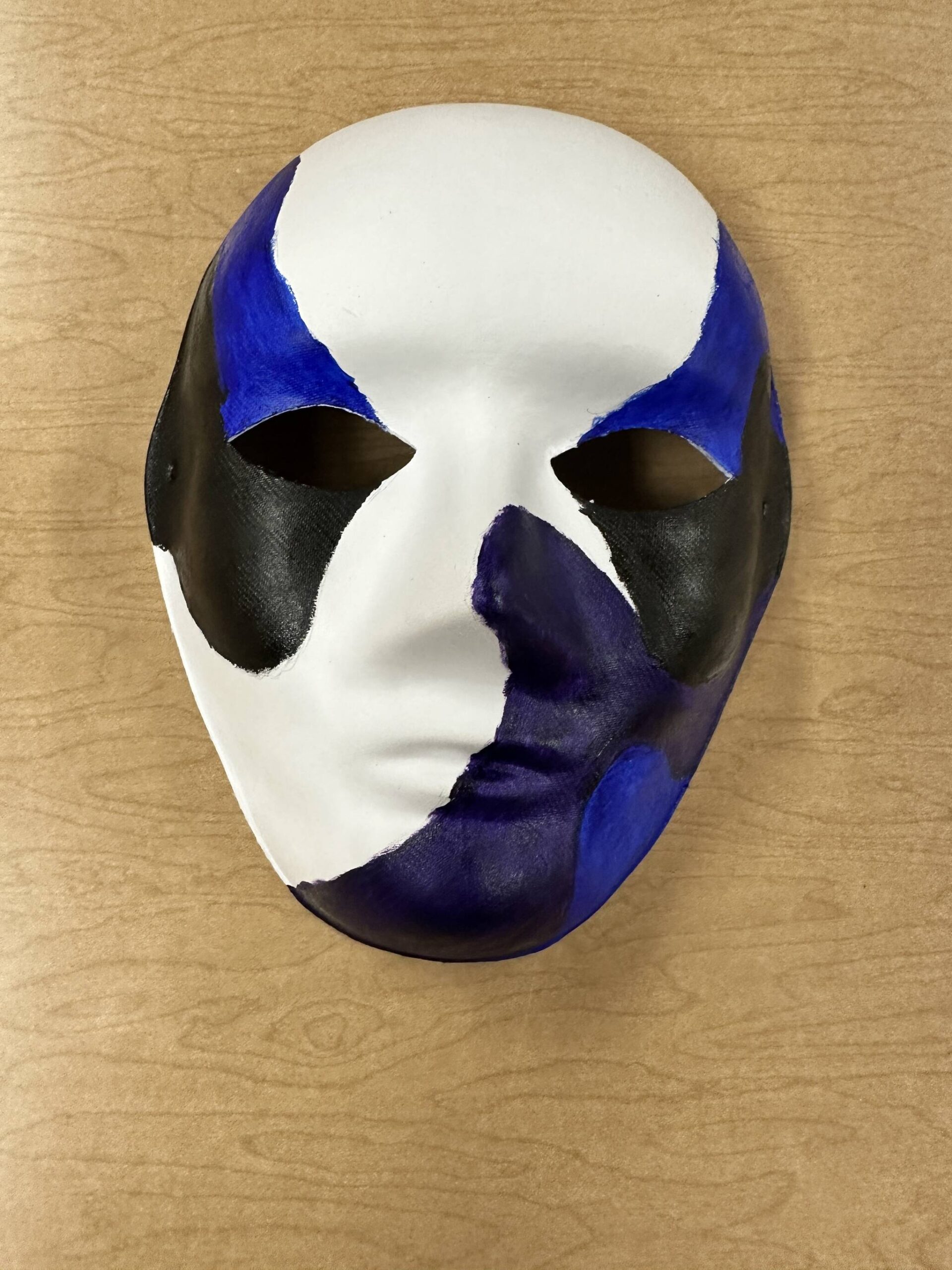No matter the level of skill or complete lack thereof, art can be a powerful tool to express ideas and feelings trapped in the brain when words don’t come easy, especially when few are willing to listen.
Through art, some inmates in the Island County Jail’s Residential Substance Abuse Treatment program have been learning healthy ways to cope with mental illness and the struggles they encounter in life.
Though it’s only been a year since the beginning of its collaboration with the program, the Pacific NorthWest Art School has already made a positive difference in the inmates’ lives, according to artist Beth Herrild, who is familiar with the healing power of art.
Twice every month, Herrild spends two hours with a group of about five men at the jail to teach them how to create art with watercolors, acrylic paints, air dry clay, pencils, markers, paper mache and more.
At first, the students can seem skeptical about the program. But as time goes by, they become more vulnerable and open to talk about their feelings, with visible changes to their body language too, according to Lisa Bernhardt, the executive director of the art school.
Some projects have looked like a pop-art self portrait, others like a mask depicting what people see on the outside and what’s actually on the inside.
Now, she said, the students look forward to their lessons, asking if there will be any art classes they can join after they are released from jail. Though the lessons are only twice a month, students can keep working on their projects during other meetings with the Residential Substance Abuse Treatment program.
For some of them, the lessons are a rare moment where they are seen not for the crimes they have committed, but simply as people with thoughts and feelings, according to Bernhardt.
In Herrild’s class, there is no such thing as a wrong answer. Sure, there are certain rules to follow in order to keep a clay sculpture from falling apart or to convey depth on a piece of paper, but when it comes to the subject, creativity takes the reins.
If there is something Herrild has learned by teaching art to children and teens in juvenile detention and by volunteering at a sanctuary art center for homeless youth and young adults, it would be that people “blossom” when they are free to create anything they want.
If they can’t come up with an idea, they can create repetitive patterns and focus on the process rather than the subject itself.
During each lesson, students discuss emotions, art techniques and topics such as the difference between street art and graffiti. Herrild also teaches her students what tools they can use to achieve a desired result without spending too much money. That way, when they are free, they can keep the creative juices flowing without worrying about costs and maintain their newly acquired coping skills.
The act of creating has a calming effect that can soothe symptoms of anxiety and depression. According to Herrild, it’s a form of meditation and an activity that provides valuable lessons, getting students out of their comfort zones and teaching them how to be less rigid in art and in life.
Herrild recalled one student who was struggling to draw an eagle.
“I can’t draw,” she remembered him saying. “I have ADHD.”
To help him, she flipped the reference photo upside down. That way, she said, he would just see it as a combination of shapes and lines rather than an eagle.
By doing that, Herrild taught the student one way to trick his brain into seeing “what’s actually there” rather than what he thinks something should look like. To her, it’s a way to get out of one’s head and see something from a different perspective, which can be life-changing.
As they progress, students gain self esteem and a new interest. After graduating and being released from jail, Herrild said, one student continued to reach out to the program to encourage other inmates. Other inmates in the program might be transferred to other jails or be released before they can graduate, but they can still make use of the lessons they learned.
Some of the students’ work will be featured at the art school’s All Island Juried Art Show Reception, along with works by artists from all over the county. The event will take place from 6 to 9 p.m. Friday, April 12, at the Pacific NorthWest Art School, located at 15 Northwest Birch Street in Coupeville. Tickets can be purchased at pacificnorthwestartschool.org.
Community members are also invited to donate to the program through the same website.



